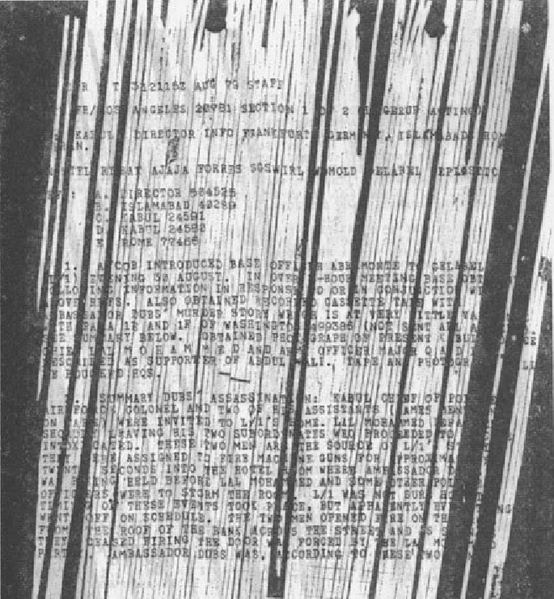The movie Argo is loosely based on the Wired article How the CIA Used a Fake Sci-Fi Flick to Rescue Americans From Tehran
By Joshuah Bearman April 24, 2007. Within the article the shredded documents are mentioned (emphasis mine):
As time passed, the threat of discovery was mounting. The militants
had been combing embassy records and figuring out who was CIA. They
had even hired teams of carpet weavers to successfully reassemble
shredded documents. (The recovered papers would later be published by
the Iranian government in a series of books called Documents From the
US Espionage Den.) They might eventually figure out the true number of
embassy staff, count heads, and come up short. Outside, the
Revolutionary Guards had recently been making a show of force in
Shemiran, menacing the streets where foreigners lived and coming very
close to both hideouts. Once, the Americans had to dive away from the
windows when a military helicopter buzzed the Sheardowns’ house. And
everyone was spooked when an anonymous caller to the Taylor residence
asked to speak with Joe and Kathy Stafford and then hung up.
So this aspect of the movie was sourced in the original article by Bearman.
Eventually the CIA even jumped in and tweeted about the movie, including the shredded documents (emphasis mine):
Real #Argo: Skilled carpet weavers did reconstruct shredded documents,
but they didn’t reveal one of the Americans at the last moment.
Again, Skilled carpet weavers. No mention of sweat-shop children.
Documents from the U.S. Espionage Den can be found on the internet. A page from wikimedia illustrates the existence of the documents:

So we have conformation the documents were reassembled, though the only description of those performing the task is 'carpet workers'.
(I personally don't think the CIA would have resisted 'getting the dig in' during their tweet if they had any information that these workers were child laborers in a sweat-shop situation.)
Another version of these events is presented in the book Our Man in Tehran, by Canadian historian Robert Wright. It states that the documents were reassembled by student volunteers over several years:
Once the vault was surrendered, the students imposed a strict rule
that it was not to be disturbed in any way. They then resolved to
catalogue and reassemble all the shredded strips by hand. Teams of up
to twenty volunteers, most of them high school students, worked for
the next six years recombining the tangled contents of the shredders.
In 1985 their work was complete: 2300 files (a total of 3000 pages)
were published in 85 volumes.
This does hint at younger individuals performing the work, but again no documentation which supports the claim that these were 'sweat shop children' .
